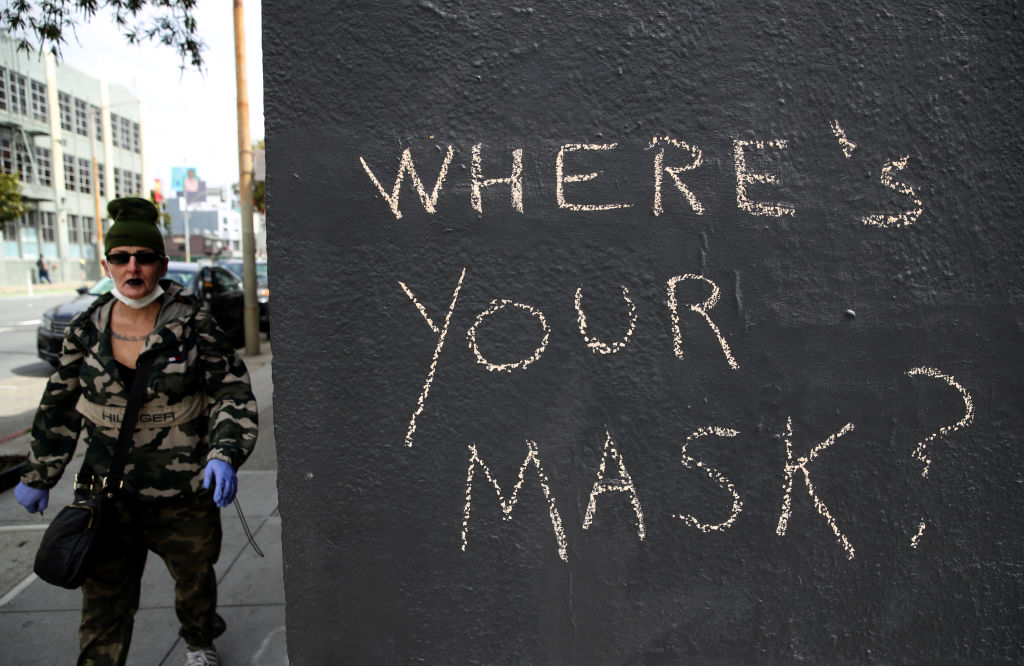The ‘Danmask-19 trial‘ sought to test whether face masks are effective in preventing infection with SARS-CoV-2 (the virus that causes Covid-19) for the wearer. It found that the recommendation to wear surgical masks to supplement other public health measures ‘did not reduce the SARS-CoV-2 infection rate among wearers by more than half in a community’. So does this mean wearing masks is a waste of time? There are several reasons that drawing such a conclusion from this study might be unwise.
A randomised controlled trial (RCT) is often – though not always – the best way of testing whether a treatment works, because RCTs guard against the biases inherent in many other research designs. But RCTs can be designed to answer mission-critical questions or more marginal ones, and they can be done more or less rigorously. Here are eight questions to ask about the study:
Why did the trial focus on protecting the wearer?
‘Does my mask protect me?’ is a legitimate scientific question. But in the context of this pandemic, mask-wearing by the general public is recommended primarily for source control (that is, my mask is intended to protect you). The authors of the study warned that its findings:
‘Should not be used to conclude that a recommendation for everyone to wear masks in the community would not be effective in reducing SARS-CoV-2 infections, because the trial did not test the role of masks in source control.’
In short, this means that the study should not lead to the conclusion that we should abandon wearing masks.
Why were standard scientific practices for RCTs not followed?
The DANMASK-19 researchers did not appear to have involved a clinical trials unit (a specialist research methodology unit which would have advised on sample size, outcome measures and other aspects of scientific rigour). The authors make no mention of the CONSORT criteria – viewed as the gold standard for the conduct and reporting of RCTs. The study did not receive formal ethical approval.
Why were the complex dynamics of Covid-19 spread not factored in?
Person-to-person spread of disease follows non-linear dynamics, meaning that even small changes can have big effects. A minor reduction in R (the number of people who become infected from a single index case) can lead to a huge reduction in overall incidence. The DANMASK-19 researchers looked for a 50 per cent reduction in infection rate as the minimum meaningful effect. In fact, even a 20 per cent reduction would have led to significantly fewer people becoming infected with each generational cycle (try changing R – say from 1.25 to 1.0 – in this interactive model).
Why was the sample size so small?
6000 participants sounds like a lot, but it was probably not nearly enough. To detect a 20 per cent reduction in infection rate at conventional levels of statistical significance would have required at least 35,000 people. In addition, the incidence of Covid-19 in Denmark at the time of the study was very low, and a social distancing policy was in place, so few cases were to be expected in either group. Because of this, an even larger sample may have been needed to be confident of the result.
Why were people told to wear a mask only when going out?
People in the mask group were asked to put one on when they went out, but not asked to wear one at home. Yet we know that the home is a major site where outbreaks of Covid-19 occur. Fewer than half the people in the mask group admitted to wearing their mask as directed. People in the mask group who became infected with Covid-19 during the study may have caught it when not wearing their mask.
Why was the intervention period (30 days) so short?
People were asked to do a swab (antigen) and fingerprick (antibody) test on day 0 and day 30, and an additional test if they developed symptoms in between. It can take up to 14 days for someone who gets infected to develop symptoms. So people who had a positive swab in the first two weeks of the study could have been infected before the study began and those infected in the last week may have been missed. The number of positive swab tests was therefore probably an under-estimate of the infection rate in both groups.
Why was the antibody test used in the study on the FDA’s ‘removed’ list?
Most infections identified were based on antibody tests. The antibody test used is listed by US Food and Drug Administration (FDA) under ‘tests that should no longer be used’. It is valid only 17 days or more after developing symptoms (22 days after becoming infected, since it takes on average five days from infection to symptoms). This means that most of the positive antibody tests (in either group) likely reflected infections that happened before the study started, and most infections incurred during the study will have been missed because the test may not have become positive until after day 30. Furthermore, 20 per cent of people who tested antibody-positive during the study did not send in a baseline antibody test on day 0, so they may have become antibody-positive before the study began.
Why were the results of the more accurate swab tests glossed over?
The number of positive swab tests (the best test of infection) was zero in the mask group compared to five in the no-mask group. Given the very low rate of infection at the time and the very short period of mask wearing, these findings are compatible with a real effect of masks in protecting the wearer.
DANMASK-19 was no doubt undertaken with good scientific intentions. But it is not the last word on whether masks work.
Trisha Greenhalgh is Professor of Primary Care Health Sciences, Oxford University, and Deepti Gurdasani is senior lecturer in epidemiology at Queen Mary’s, University of London






Comments